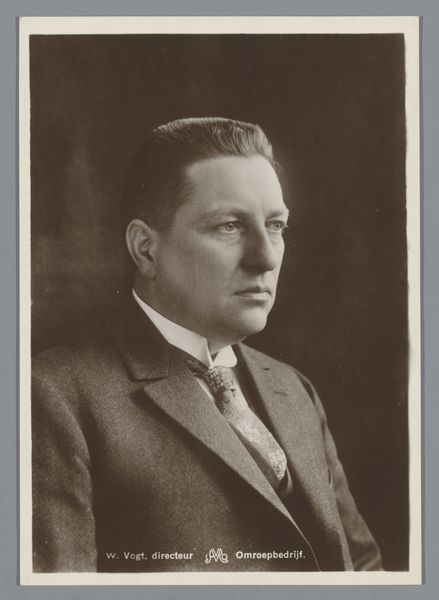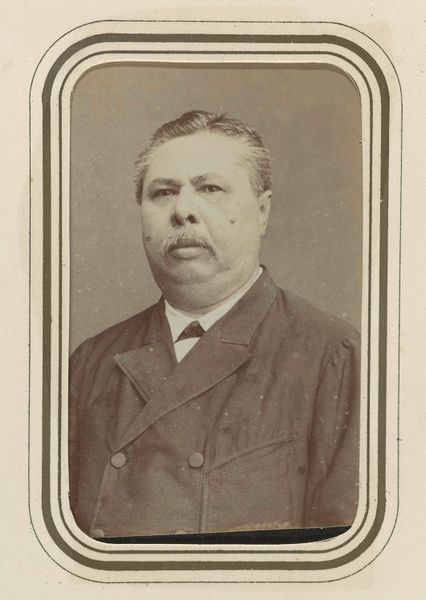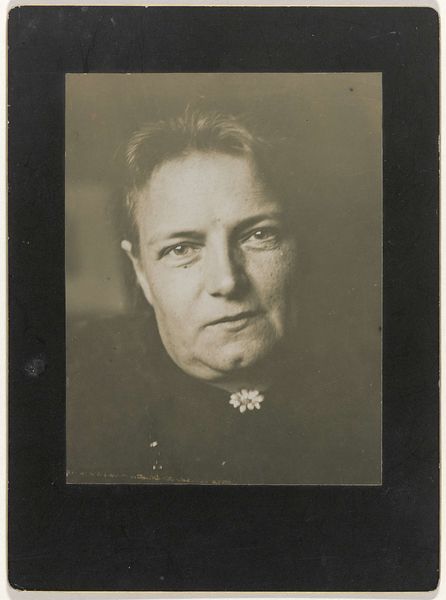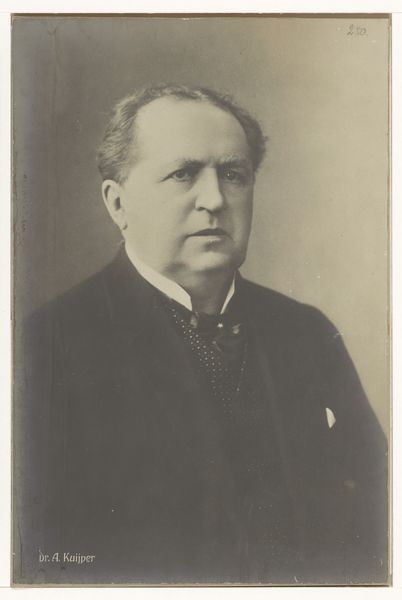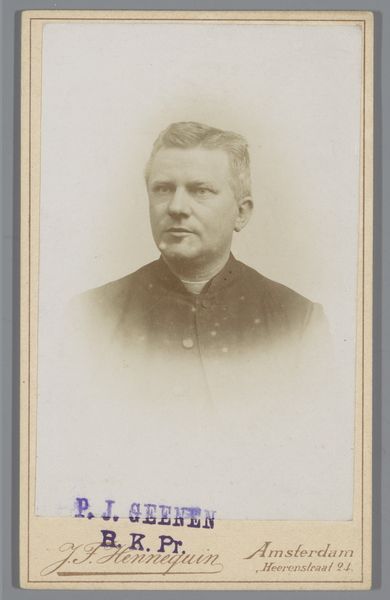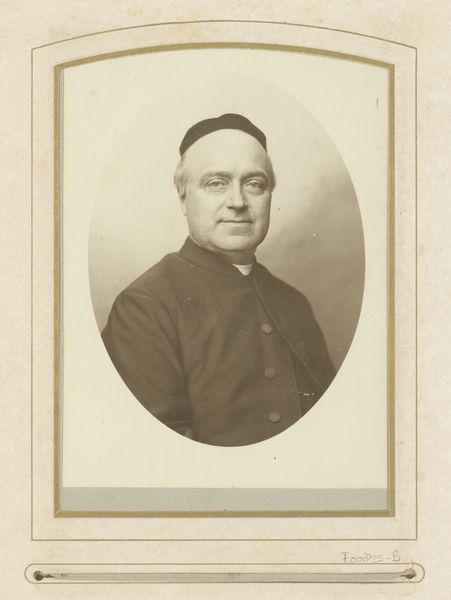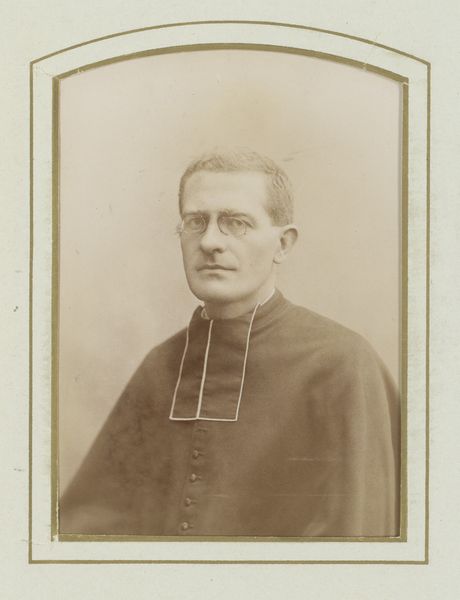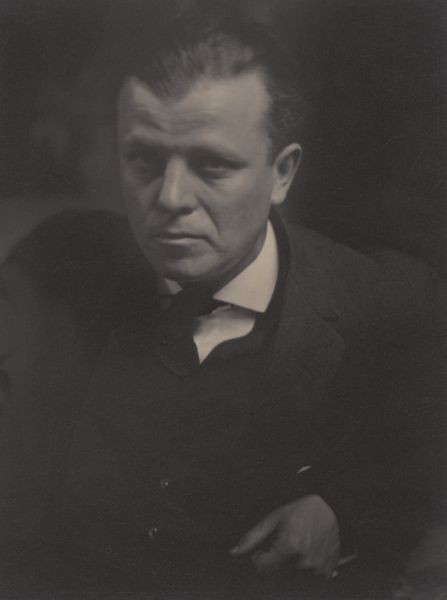
photography, gelatin-silver-print
#
portrait
#
wedding photograph
#
photo restoration
#
low key portrait
#
portrait image
#
portrait subject
#
photography
#
portrait reference
#
gelatin-silver-print
#
portrait drawing
#
portrait character photography
#
modernism
#
fine art portrait
#
celebrity portrait
Dimensions: height 117 mm, width 100 mm
Copyright: Rijks Museum: Open Domain
Curator: Here we have a gelatin-silver print entitled "Portret van priester staatsman Nolens," or "Portrait of Priest Statesman Nolens," dated sometime between 1870 and 1985. What strikes you about it? Editor: Immediately, I'm struck by its somberness. The low-key lighting and muted grayscale palette contribute to a feeling of gravitas and perhaps even a hint of melancholy. Curator: Indeed. The photographer employs a restricted tonal range, focusing attention on the texture and form. Note the careful modulation of light across the face, achieving a powerful three-dimensionality. Editor: And the composition. The figure is positioned squarely in the frame, looking directly at the viewer with what might read as quiet resolve or impassivity. I’m curious about Nolens as a political figure. What tensions or reforms were shaping the landscape he inhabited? Curator: It's a portrait meant to convey authority and steadfastness. The high collar and severe expression lend to that impression. The formal attire adds a layer of distance. It emphasizes the subject's role rather than revealing any deep insight into his personhood. Editor: Considering the subject's dual roles, priest and statesman, one could argue that his severity communicates adherence to rigid, perhaps conflicting, codes. It leaves one to ponder: in what ways might the photographic rendering itself act as a subtle instrument of power? The formal presentation projects a carefully curated image of integrity. Curator: Precisely, it reflects a carefully controlled performance. It serves as a testament to the technical skill of early photographic portraiture. The gelatin-silver print method itself allowed for that degree of controlled detail and reproducible image-making, influencing representation itself. Editor: Yes, it makes me consider how portraits like these played into the construction and dissemination of a specific political and religious identity. It's a document meant to endure and persuade within very specific social power dynamics. Curator: Examining the formal components has offered us distinct ways to understand that identity. Editor: And contextualizing it socially enables deeper analysis. Both critical approaches, I believe, mutually inform.
Comments
No comments
Be the first to comment and join the conversation on the ultimate creative platform.


